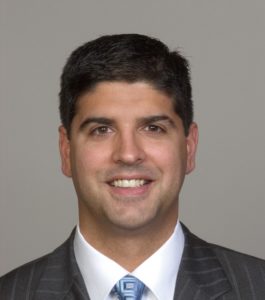
In this age of staffing problems, overworked administrators and overworked nurses, CNAs and DSPs in nursing homes and assisted living facilities, it can be hard to manage your workforce. I often hear stories from our clients about administrators working overtime (as usual), but also mopping floors, and doing other jobs in the facility for which it is short-staffed.
Or I hear about staff working multiple shifts just to keep the facility running. It is part of the calling that today’s nursing home and assisted living dedicated workforces are used to.
But I often find that in the bustle of keeping up with staffing needs, oftentimes facilities fail to properly terminate or follow up with departing employees properly to avoid liability. For example, facilities fail to grasp what our labor attorneys do regularly for our clients: properly exiting employees from a facility to reduce liability and problems down the road.
For example, many facilities do not understand that it may be beneficial to provide key employees departing from a facility with a proper release agreement, or severance agreement. Severance agreements take all types of forms, but typically, a severance agreement allows the facility to gain helpful releases of liability from employees who may try to sue the facility, denigrate or bad-mouth a facility, or complain to the government about a facility on the way out.
Having a proper labor attorney analyze employee departures is a good idea. Often, facility administration does not have the time or wherewithal to ask proper questions about risks a particular departing employee may impose on a facility… until it is too late. Being proactive about departing employees can save headaches and problems, even when you might not even suspect a problem with a departing employee. We’ve seen that several times for our clients.
A general release itself, or as part of a severance agreement, goes a long way to allow the facility to gain certainty that a departing employee will not later “turn” on it and impose liability for the facility after departure. Or maybe you might just need a non-disparagement agreement, at a minimum.
But don’t try drafting these types of agreements on your own. Labor attorneys very carefully draft them depending on the particular situation – otherwise, your severance agreement or general release will not be effective, or could easily be rendered unenforceable by a court of law. Many facilities wrongly believe that just because you have someone’s signature on a poorly drafted agreement, the facility will be protected, or that it is legally binding in some way.
Unfortunately, labor laws are so complicated, differing from state to state, as well, that certain required and detailed language is necessary in these types of agreements. Otherwise the laws (that typically overwhelmingly favor employees) will render them invalid.
It may be difficult to focus on departing employees because the industry has been so saddled with staffing shortages, and facilities over the pandemic (and still today) are more focused on getting more help, or on replacing the departing employee immediately. But if you want to limit your liability, paying attention proactively to departing employees could save you from expensive lawsuits and further liability down the road.
Neville M. Bilimoria is a partner in the Chicago office of the Health Law Practice Group and member of the Post-Acute Care And Senior Services Subgroup at Duane Morris LLP; [email protected].
The opinions expressed in McKnight’s Long-Term Care News guest submissions are the author’s and are not necessarily those of McKnight’s Long-Term Care News or its editors.




